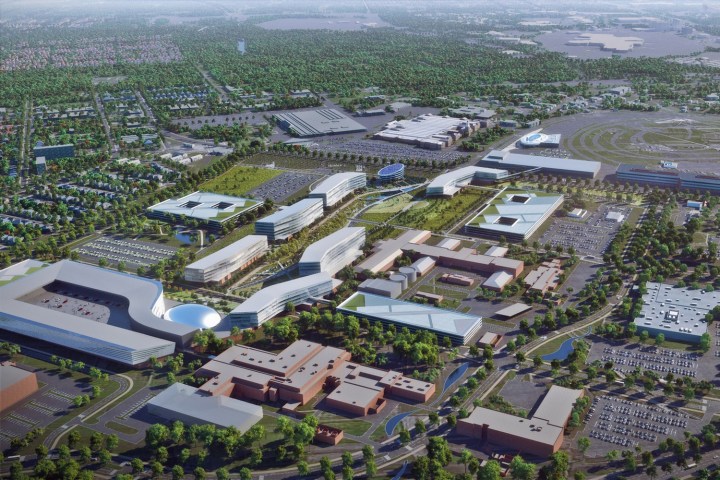
The rebuild will take 10 years and involve the renovation of more than 7.5 million square feet of workspace, Ford says. It plans to consolidate work spaces for 30,000 employees into two main campuses: A “product campus,” and an administrative campus built around the current Ford World Headquarters building.
The “product campus” will be built around the existing Ford Research and Engineering Center Campus, which was dedicated by President Dwight Eisenhower in 1953. It currently houses 12,000 employees, but will eventually accommodate 24,000 with the planned upgrades. That includes a new 700,000-square-foot design center Ford says will be the focal point of the campus.
Ford will also use this part of the campus to test technologies under its “Smart Mobility” banner. That includes self-driving cars, e-bikes, and on-demand shuttles to get employees across what will still be a very large space. Bike paths, walkways, and green spaces will link the various buildings. The buildings themselves will get updated connectivity hardware, plus geothermal heating and cooling, and rainwater capture and automated metering to save water.
The upgraded Ford World Headquarters campus will be based around the 1956 headquarters building. As with the product campus, buildings here will get connectivity upgrades and changes aimed at lowering the campus’ environmental impact. Ford also plans to stitch these buildings together with green spaces, including the renewal of an arboretum that was started in 1960.
Speaking of green, Ford also plans to build a “Sustainability Showcase” onsite. This building will aim to meet “Living Building Challenge” standards, including net zero waste, energy, and water. It will do that with geothermal heating and cooling, as well as solar power. Other buildings will have increased insulation, more efficient lighting, and heat recovery to reduce energy use, and will implement measures to save water.
Construction of the product campus begins this month, and is expected to be completed by 2023. The majority of work on the world headquarters campus will begin in 2021, and will be completed by 2026.
Editors' Recommendations
- How Intel and Microsoft are teaming up to take on Apple
- Ford recalls nearly 1.9 million Explorer SUVs over safety issue
- Ford and GM EV drivers will be able to charge at Tesla Superchargers in February
- Watch these eVTOL aircraft take to NYC skies in glimpse of the future
- Ford Mustang Mach-E Rally kicks up some dirt


